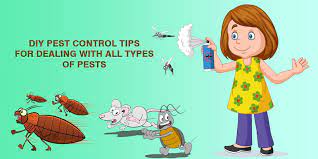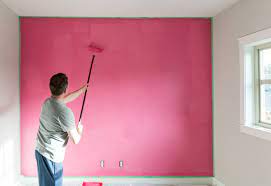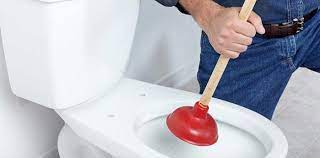Dealing with pests in your home can be a frustrating experience, but effective pest control doesn’t always require professional intervention. With the right knowledge and a proactive approach, you can tackle common household pests on your own. In this comprehensive guide, we’ll provide you with practical DIY home pest control strategies to help you keep unwanted visitors at bay.
1. Identify the Pests
Before implementing any pest control measures, it’s crucial to identify the specific pests you’re dealing with. Different pests require different treatments. Common household pests include ants, cockroaches, rodents, spiders, and flies. Take note of the areas where you’ve noticed pest activity to target your efforts effectively.
2. Maintain Cleanliness
One of the most effective preventive measures for pest control is maintaining a clean and clutter-free environment. Pests are attracted to food crumbs, spills, and unsealed garbage. Regularly clean kitchen surfaces, vacuum floors, and promptly dispose of trash in sealed containers. Eliminating potential food sources discourages pests from infesting your home.
3. Seal Entry Points
Pests often find their way into homes through small cracks, gaps, and openings. Conduct a thorough inspection of your home’s exterior and seal any potential entry points. Use caulk to close gaps around windows and doors, repair damaged screens, and ensure that utility entry points, such as pipes and vents, are properly sealed.
4. Remove Standing Water
Many pests are attracted to standing water, providing them with a breeding ground. Regularly check for and eliminate standing water around your home, both indoors and outdoors. Fix leaky faucets, ensure proper drainage in basements and crawl spaces, and empty trays under houseplants to reduce moisture levels.
5. Use Natural Repellents
Consider incorporating natural repellents to deter pests. For example:
- Peppermint Oil: Peppermint oil is known to repel spiders, ants, and mice. Mix a few drops of peppermint oil with water and spray it in areas prone to pest activity.
- Citrus Peels: Citrus peels, such as those from oranges or lemons, can act as a natural deterrent for spiders and ants. Place peels near entry points or known pest hotspots.
- Bay Leaves: Bay leaves can help keep pantry pests, such as moths and weevils, at bay. Place bay leaves in kitchen cabinets and pantry shelves.
6. Diatomaceous Earth for Crawling Insects
Diatomaceous earth, a natural sedimentary rock powder, can be effective against crawling insects like ants, cockroaches, and fleas. Sprinkle diatomaceous earth in areas where pests are active, and the fine powder will work to dehydrate and eliminate them.
7. Boric Acid for Cockroaches
Boric acid is a well-known remedy for dealing with cockroach infestations. Create a mixture of boric acid and sugar, placing it in areas frequented by cockroaches. The sugar attracts them, and the boric acid acts as a lethal agent when ingested.
8. Use Traps and Baits
For rodents and insects, traps and baits can be effective.:
- Snap Traps: Snap traps are classic yet effective for catching mice and rats. Place them in areas where rodent activity is observed.
- Glue Traps: Glue traps are useful for catching insects like spiders, ants, and cockroaches. Place them along baseboards, behind furniture, and in dark corners.
- Bait Stations: Bait stations containing rodenticide are effective for controlling rodent populations. Place them strategically in areas where rodents are likely to travel.
9. Regularly Inspect and Monitor
Stay vigilant by regularly inspecting your home for signs of pest activity. Monitor areas that are prone to infestations, such as kitchens, bathrooms, and basements. Early detection allows for prompt action and prevents infestations from becoming severe.
10. Consider Professional Assistance if Needed
If your pest problem persists despite DIY efforts, or if you’re dealing with a severe infestation, it may be time to seek professional pest control services. Professionals have the expertise and access to stronger treatments that can effectively eliminate stubborn pest issues.
Conclusion
Taking a proactive and systematic approach to DIY home pest control can help you create a pest-free environment. By implementing these strategies, you not only address existing pest problems but also create a foundation for long-term prevention. Regular maintenance and preventive measures are key to keeping your home free from unwelcome pests.
FAQs
- Are DIY pest control methods safe for pets and children?
- Most DIY pest control methods are safe when used correctly. However, it’s essential to read and follow product instructions carefully. Keep pets and children away from treated areas until they are deemed safe.
- How often should I inspect my home for pests?
- Regular inspections, at least once a month, are recommended to catch early signs of pest activity. Focus on areas prone to infestations, such as kitchens, bathrooms, and entry points.
- Can I use essential oils for pest control?
- Yes, certain essential oils like peppermint, eucalyptus, and citronella can be effective natural repellents. Mix them with water and spray in areas where pests are active.
- Are DIY traps as effective as professional pest control?
- DIY traps can be effective for smaller pest problems. However, professional pest control may be necessary for larger infestations or persistent issues, as professionals have access to stronger treatments.



